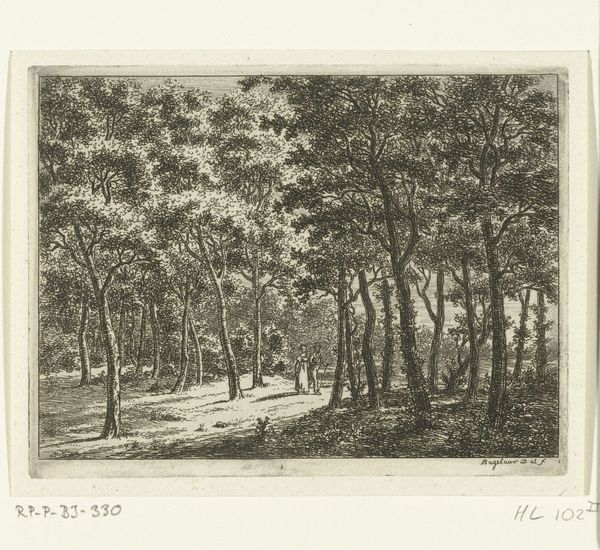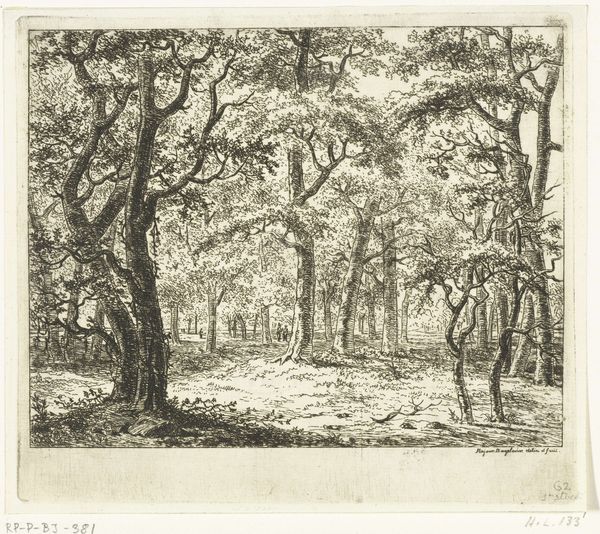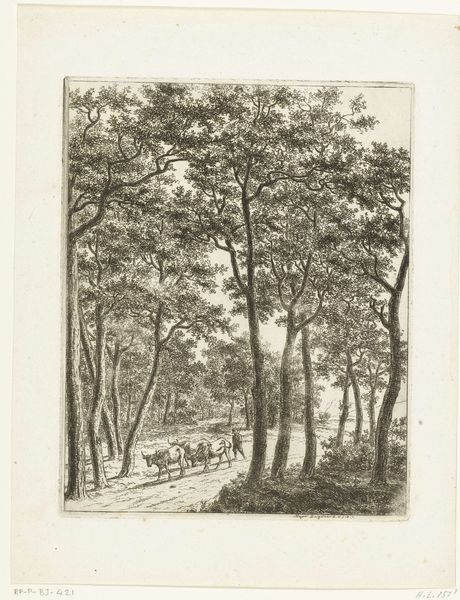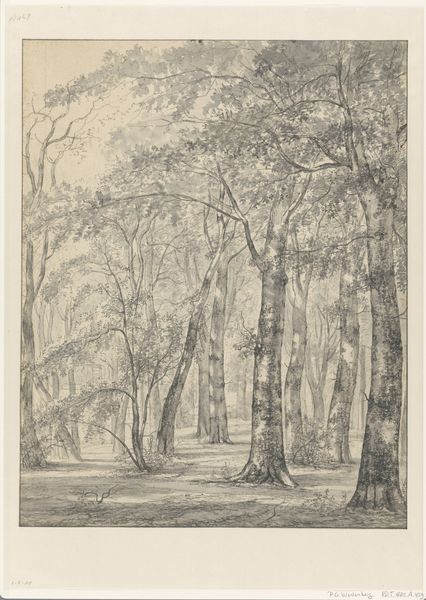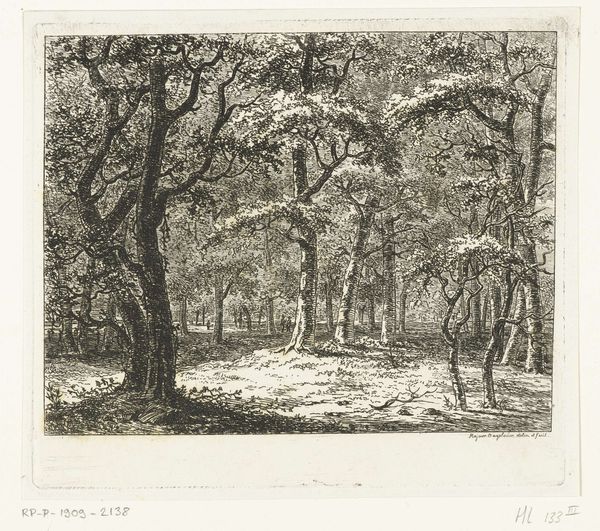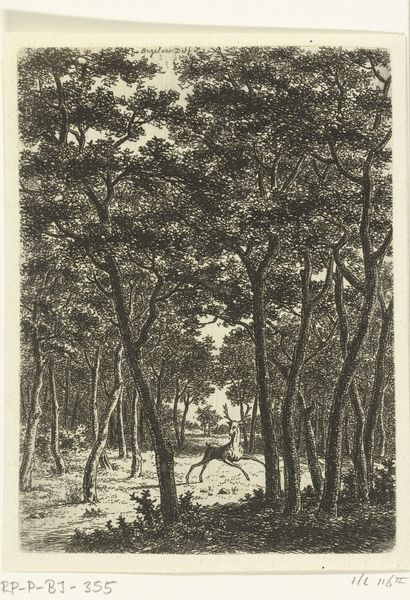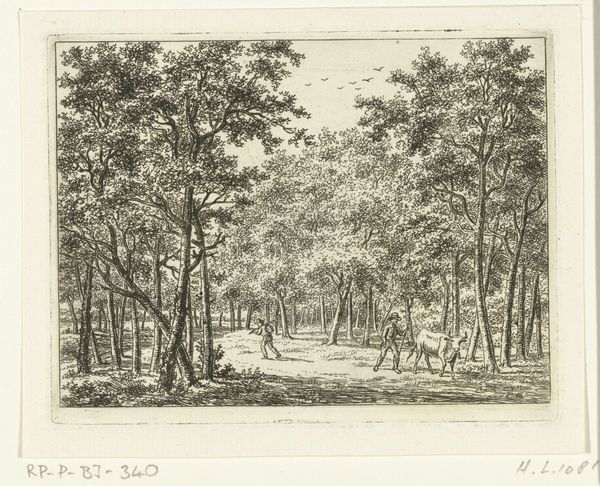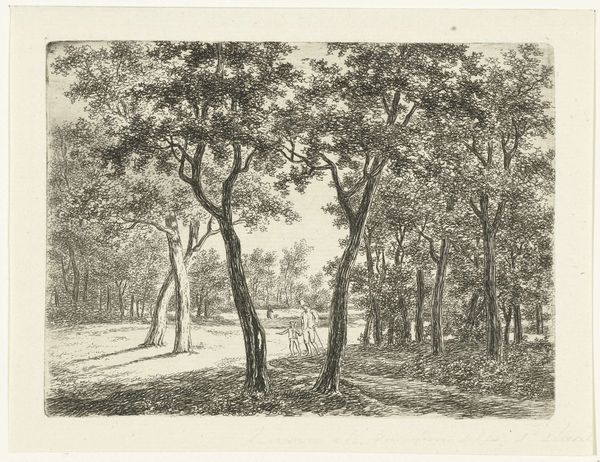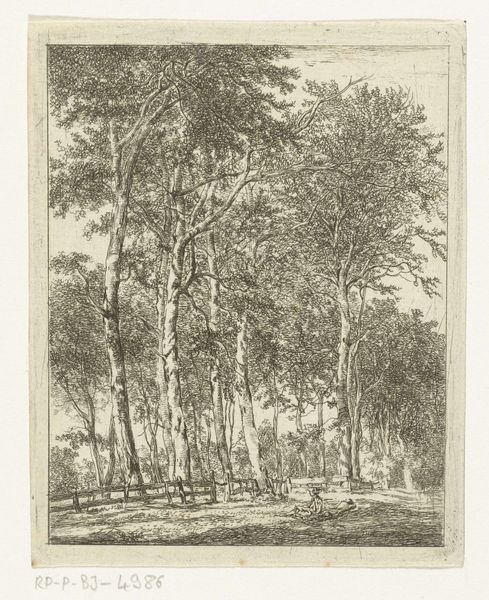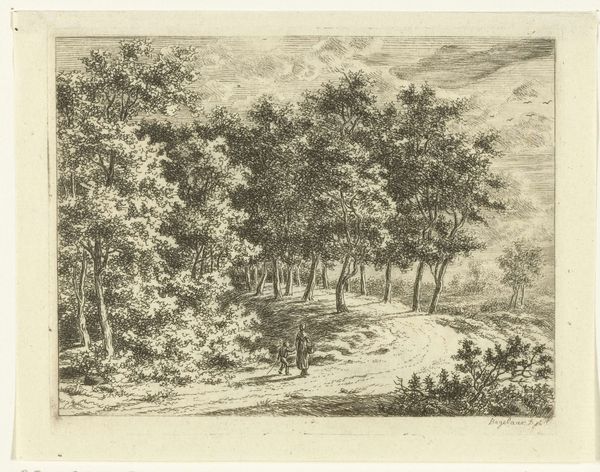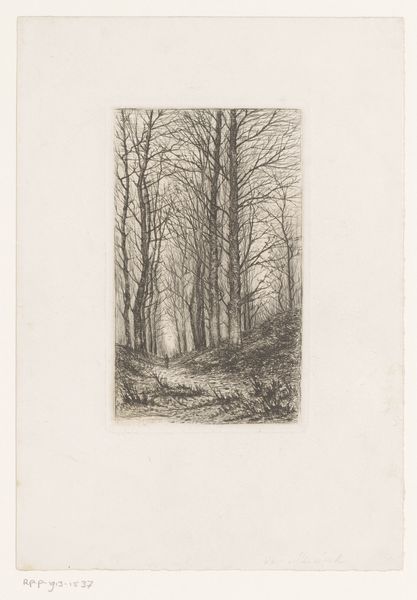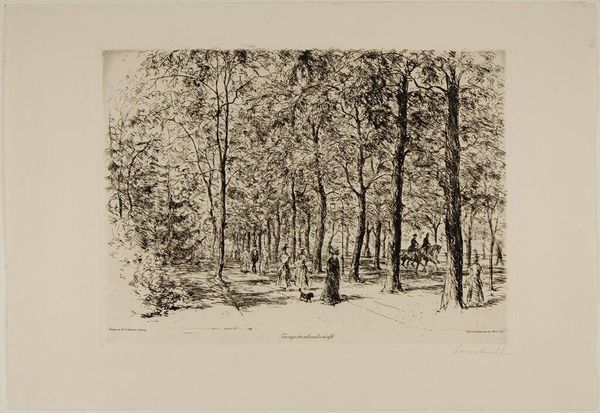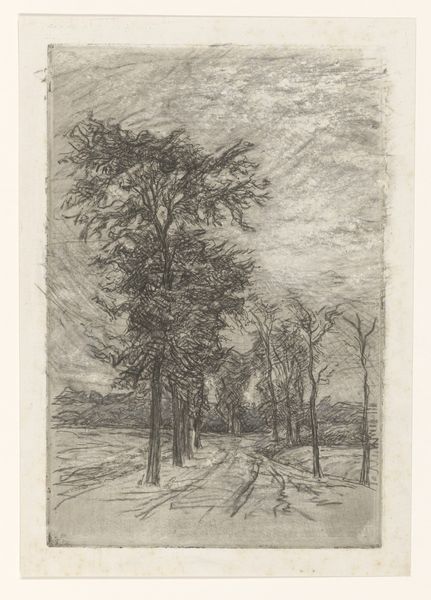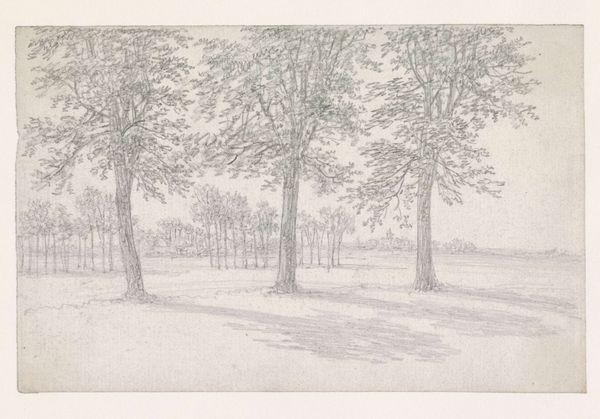
drawing, etching, pen
#
drawing
#
pen sketch
#
etching
#
pencil sketch
#
landscape
#
forest
#
romanticism
#
pen
Dimensions: height 76 mm, width 70 mm
Copyright: Rijks Museum: Open Domain
Curator: This etching, dating roughly from 1798 to 1837, is titled "Two Men with Dogs in the Forest," crafted by Ernst Willem Jan Bagelaar using pen. What's your immediate response to this piece? Editor: A sense of quietude strikes me first. The density of the forest rendered with delicate lines gives it a somewhat dreamy quality. Almost as if a fleeting moment of solitude, away from the more structured aspects of society. Curator: Absolutely. This period sees a rise in Romanticism, with a renewed focus on nature and individual experience. We observe the emergence of public parks during the early 19th century— spaces for leisure and reflection but also expressions of social status. To depict individuals casually in a forest would speak to larger changes in land use and ideas of freedom during that period. Editor: And the dogs further that image of freedom, of connection with the primal. The forest itself is a potent symbol – of the unknown, the untamed, the unconscious. What kind of person goes into the forest in that historical context? I see a hint of wanderlust in the etching. Curator: Considering Bagelaar was an artist during a period of immense socio-political change—from the Batavian Republic to the Kingdom of the Netherlands—it makes sense that his art reflected the fluctuating roles of the individual versus society, of the importance of nature. Did the emerging middle classes have newfound freedom and the possibility of independent contemplation in spaces beyond aristocratic gardens? Editor: It makes me think of a quest for authentic experiences, even if fleeting, for those whose lives were increasingly dictated by urban spaces. Note how they are moving towards the horizon, guided by the unknown depths of the woods. It does suggest an attraction, as much as any feeling of being lost. Curator: The density and the technique create such a compelling dichotomy, yes. Its creation parallels those dichotomies as well, I imagine, from raw materials to the market, a process mediated by economic structures to allow us to consume this piece today. Editor: It is really rewarding to reflect upon such intricate imagery like this. Thank you for pointing out the historical framework that lends to its symbolism. Curator: Likewise, reflecting on symbols makes us both consider the artwork on view, and our current views on art.
Comments
No comments
Be the first to comment and join the conversation on the ultimate creative platform.
